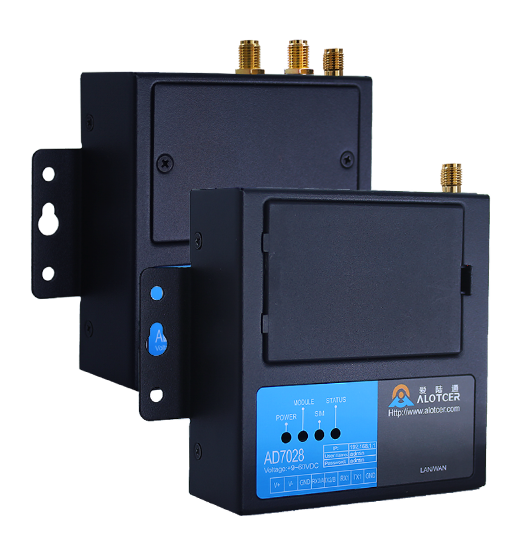86-18144159516
86-18144159516

In today's highly connected world, wireless communication has become an integral part of our daily lives. From smart homes to industrial automation, the ability to transmit data wirelessly has revolutionized the way we interact with technology. However, with the advent of various wireless protocols, choosing the right one for your specific application can be a daunting task. In this comprehensive guide, we will delve into the battle between two prominent contenders: ZigBee and WiFi.
A. The Importance of Wireless Communication in the Modern World
Wireless communication has become a necessity in our modern world, enabling seamless connectivity and data exchange across a wide range of devices and applications. From mobile phones and laptops to smart home systems and industrial automation, the ability to transmit data wirelessly has transformed the way we live, work, and interact with technology.
B. Understanding the Differences Between ZigBee and WiFi
While both ZigBee and WiFi are wireless communication protocols, they differ significantly in their design, capabilities, and intended use cases. ZigBee is a low-power, low-data-rate protocol optimized for low-cost, low-power applications, such as home automation and sensor networks. On the other hand, WiFi is a high-speed wireless local area network (WLAN) technology that enables high data rates and supports bandwidth-intensive applications like video streaming and online gaming.
C. Overview of the Article's Structure
In this comprehensive guide, we will explore the intricacies of ZigBee and WiFi, delving into their key features, power consumption, data rates, network topologies, security mechanisms, and real-world applications. By the end of this article, you will have a thorough understanding of these wireless protocols, enabling you to make an informed decision on which one best suits your specific needs.
A. Defining ZigBee: A Low-Power, Low-Data-Rate Wireless Protocol
ZigBee is a wireless communication protocol designed for low-power, low-data-rate applications. It operates in the industrial, scientific, and medical (ISM) radio bands, typically 2.4 GHz, and is based on the IEEE 802.15.4 standard. ZigBee is optimized for applications that require low power consumption, long battery life, and small data packet transmission, making it an ideal choice for various Internet of Things (IoT) and sensor network applications.
B. Key Features of ZigBee
With its low power consumption, mesh network topology, secure communication, and interoperability, ZigBee has become a popular choice for applications such as home automation, industrial monitoring and control, and healthcare, where energy efficiency, reliability, and low data rates are paramount.
A. Defining WiFi: A High-Speed Wireless Local Area Network (WLAN) Technology
WiFi, short for Wireless Fidelity, is a high-speed wireless local area network (WLAN) technology that enables devices to connect to the internet and communicate with each other wirelessly. It operates in the 2.4 GHz and 5 GHz radio frequency bands and is based on the IEEE 802.11 standards. WiFi is widely adopted for its ability to provide high data rates and support bandwidth-intensive applications such as video streaming, online gaming, and large file transfers.
B. Key Features of WiFi
With its high data rates, widespread adoption, robust security, and versatility, WiFi has become the de facto standard for wireless networking in homes, offices, and public spaces, enabling a wide range of applications and services that require high-speed wireless connectivity.
A. ZigBee: A Low-Power Champion
B. WiFi: Higher Power Demands
In contrast to ZigBee, WiFi devices generally have higher power demands and require a continuous power supply or frequent battery recharging. This is primarily due to the high data rates and bandwidth requirements of WiFi, which necessitate more robust hardware and increased power consumption.
WiFi devices, such as routers, access points, and client devices (e.g., laptops, smartphones), typically need to be connected to a power source or have their batteries recharged regularly. Even in power-saving modes, WiFi devices consume significantly more power than ZigBee devices, making them less suitable for applications that require extended battery life.
While WiFi's power demands may be a limitation for battery-powered devices, it is well-suited for applications where devices have access to reliable power sources. For example, in home and office environments, WiFi routers and access points can be connected to continuous power supplies, ensuring uninterrupted wireless connectivity.
Similarly, devices like smart TVs, gaming consoles, and desktop computers can leverage the high data rates and bandwidth offered by WiFi without being constrained by battery life concerns, as they are typically connected to power outlets or have large battery capacities.
It's worth noting that advancements in power management techniques and hardware optimization have led to improved power efficiency in WiFi devices. However, when it comes to applications that require ultra-low power consumption and extended battery life, ZigBee remains the more suitable choice due to its inherent design for energy efficiency.
A. ZigBee: Low Data Rates for Simple Applications
ZigBee is designed to operate at low data rates, typically ranging from 20 kilobits per second (kbps) to 250 kbps. This low data rate is intentional and aligns with ZigBee's primary purpose: transmitting small data packets for simple applications such as sensor data collection, control commands, and status updates.
ZigBee's low data rates are well-suited for applications that do not require continuous or high-bandwidth data transmission, such as home automation systems, industrial monitoring and control, and healthcare devices. These applications often involve transmitting small amounts of data intermittently, making ZigBee an efficient and energy-saving choice.
ZigBee's low data rates are particularly suitable for applications that involve sensor data collection and control commands. For instance, in a smart home system, ZigBee-enabled devices like temperature sensors, door/window sensors, and smart light bulbs only need to transmit small amounts of data periodically, such as temperature readings or on/off commands. ZigBee's low data rates are more than sufficient for these types of applications, ensuring reliable and efficient communication while conserving valuable battery life.
B. WiFi: High-Speed Data Transfer
In contrast to ZigBee, WiFi is designed to support high data rates, with the latest standards offering theoretical maximum speeds of up to several gigabits per second (Gbps). These high data rates make WiFi well-suited for applications that involve streaming media, large file transfers, and other bandwidth-intensive tasks.
For example, streaming high-definition video or online gaming requires a significant amount of bandwidth to ensure a smooth and uninterrupted experience. WiFi's high data rates enable seamless streaming and low-latency communication, making it the preferred choice for these types of applications.
Beyond media streaming and gaming, WiFi's high data rates are also ideal for bandwidth-intensive applications such as cloud storage synchronization, remote desktop access, and large file transfers. These applications often involve transferring significant amounts of data quickly and reliably, making WiFi's high-speed capabilities essential.
It's important to note that while WiFi can theoretically achieve multi-gigabit data rates, the actual throughput in real-world scenarios may be lower due to factors such as interference, distance, and the number of connected devices. However, WiFi's high data rates still far exceed the capabilities of ZigBee, making it the preferred choice for applications that demand high bandwidth and low latency.
A. ZigBee: Mesh Network Topology
One of the key strengths of ZigBee is its mesh network topology, which allows devices to communicate with each other directly or through intermediate nodes. This mesh network is self-healing and self-organizing, meaning that if one node fails or encounters an obstacle, the network can automatically reroute data through alternative paths, ensuring reliable and robust communication.
The self-healing nature of ZigBee mesh networks is particularly advantageous in situations where devices may be deployed in harsh or obstructed environments, such as industrial settings or outdoor sensor networks. If a node goes offline or experiences interference, the mesh network can dynamically reconfigure itself, maintaining connectivity and minimizing data loss.
By leveraging mesh networking, ZigBee can achieve an extended range compared to traditional point-to-point or star network topologies. Each ZigBee node acts as a repeater, forwarding data packets to other nodes within range, effectively increasing the overall coverage area of the network.
This extended range capability makes ZigBee suitable for applications that require coverage over large areas, such as building automation systems, smart agriculture, and environmental monitoring networks. Instead of relying on a single high-power transmitter, ZigBee utilizes a distributed network of low-power nodes to achieve wide-area coverage while maintaining energy efficiency.
B. WiFi: Star Network Topology
WiFi typically operates in a star network topology, where client devices connect to a central access point or router. This centralized approach simplifies network management and allows for efficient communication within a localized area, such as a home or office.
The access point acts as the central hub, receiving and forwarding data between connected devices. While this topology is effective for most indoor environments, it can be limiting in terms of range and scalability when compared to mesh networks like ZigBee.
One of the limitations of WiFi's star network topology is its relatively limited range compared to mesh networks. The range of a WiFi network is primarily determined by the power of the access point and the presence of obstacles or interference sources.
In large buildings or outdoor environments, the range of a single WiFi access point may not be sufficient to provide complete coverage, necessitating the deployment of multiple access points to ensure seamless connectivity. Additionally, WiFi networks can be susceptible to interference from other wireless devices operating in the same frequency bands, potentially degrading performance and reliability.
While WiFi's range and interference challenges can be mitigated through techniques such as access point placement optimization and channel selection, the inherent limitations of the star network topology can make it less suitable for applications that require wide-area coverage or deployment in complex environments with many obstacles.
A. ZigBee Security Features
ZigBee takes security very seriously and employs robust encryption mechanisms to protect data transmissions from unauthorized access and eavesdropping. ZigBee networks utilize the Advanced Encryption Standard (AES) with 128-bit keys for data encryption, providing a high level of security and making it extremely difficult for unauthorized parties to intercept and decrypt transmissions.
The AES-128 encryption algorithm used by ZigBee is widely recognized as a secure and reliable method for protecting sensitive data. It is approved by the National Institute of Standards and Technology (NIST) and is widely used in various industries, including government, finance, and healthcare.
In addition to data encryption, ZigBee also incorporates access control and device authentication mechanisms to ensure that only authorized devices can join and communicate within the network. These security measures help prevent rogue devices from gaining access to the network and potentially compromising its integrity.
ZigBee networks can be configured with various security policies and trust center setups, allowing administrators to control which devices are granted access and what level of privileges they have within the network. This access control functionality is particularly important in sensitive applications, such as industrial control systems or healthcare environments, where unauthorized access could have severe consequences.
B. WiFi Security Protocols
While WPA2 remains widely adopted, the Wi-Fi Alliance introduced the newer WPA3 protocol in 2018 to address emerging security challenges and provide even stronger protection. WPA3 incorporates advanced encryption and authentication mechanisms, including improved password-based authentication and support for more robust encryption algorithms like AES-256.
The adoption of WPA3 is gradually increasing, especially in enterprise and high-security environments, as it offers enhanced security features and addresses vulnerabilities discovered in previous protocols.
In addition to encryption, WiFi security protocols also include various advanced features to enhance overall network security. These features include authentication mechanisms, such as the Extensible Authentication Protocol (EAP) and Protected Management Frames, which help prevent unauthorized access and ensure the integrity of management frames.
However, despite the robust security measures implemented in WiFi networks, vulnerabilities and potential attack vectors still exist. As wireless technology continues to evolve, new security threats and exploits may emerge, requiring vigilance and timely updates to address any identified vulnerabilities.
Both the WiFi Alliance and hardware manufacturers work continuously to identify and address security vulnerabilities, releasing firmware updates and security patches to keep WiFi networks secure and protect against emerging threats.
It's important to note that while both ZigBee and WiFi employ strong encryption and security measures, the overall security of a wireless network also depends on proper configuration, regular updates, and adherence to best practices for secure network management.
A. ZigBee: Open Standards and Interoperability
ZigBee is an open standard governed by the ZigBee Alliance, a consortium of companies working together to ensure interoperability and standardization across ZigBee-based products and solutions. The ZigBee Alliance develops and maintains the ZigBee specification, which defines the protocols, messaging formats, and application profiles for various ZigBee applications.
To ensure interoperability, the ZigBee Alliance operates a certification program. Manufacturers must submit their ZigBee devices for testing and certification to ensure compliance with the ZigBee standards. Once certified, these devices are guaranteed to seamlessly communicate and interoperate with other ZigBee-certified devices, regardless of the manufacturer.
The ZigBee Alliance's certification process and adherence to open standards foster an ecosystem of compatible ZigBee devices from different manufacturers. This interoperability simplifies the integration and deployment of ZigBee-based systems across various applications and industries, such as home automation, industrial monitoring, and healthcare.
Consumers and businesses can mix and match ZigBee-certified devices from different vendors, confident that they will work together seamlessly. This level of interoperability reduces vendor lock-in, promotes competition, and encourages innovation within the ZigBee ecosystem.
B. WiFi: Widespread Adoption and Compatibility
WiFi is based on the IEEE 802.11 family of standards, which are developed and maintained by the Institute of Electrical and Electronics Engineers (IEEE). These standards define the technical specifications for WiFi, including network architecture, data rates, security protocols, and communication protocols.
The IEEE 802.11 standards are open and widely adopted, ensuring compatibility and interoperability among WiFi devices from different manufacturers. As new WiFi standards are developed and released, such as 802.11ax (WiFi 6), manufacturers must adhere to these standards to ensure their products can seamlessly integrate with existing WiFi networks and devices.
One of the key strengths of WiFi is its widespread compatibility with a vast array of devices and operating systems. WiFi chipsets and drivers are integrated into virtually all modern computing devices, including smartphones, laptops, tablets, smart TVs, gaming consoles, and IoT devices.
This widespread adoption and compatibility ensure that WiFi devices from different manufacturers can connect to WiFi networks and communicate with each other seamlessly. Users can easily connect their devices to WiFi networks, regardless of the brand or operating system, enabling seamless access to the internet, file sharing, and other network services.
Furthermore, WiFi is supported by all major operating systems, including Windows, macOS, Linux, Android, and iOS, further enhancing its compatibility and ease of use across various platforms and devices.
A. ZigBee Applications
One of the primary applications of ZigBee is in home automation and smart home systems. ZigBee's low power consumption, mesh networking capabilities, and interoperability make it an ideal choice for connecting and controlling various smart home devices, such as smart lighting, temperature sensors, door/window sensors, and smart plugs.
ZigBee-based home automation systems allow users to control and monitor their home environment remotely, automate lighting and climate control, and receive alerts in case of events like door/window openings or temperature changes. The self-healing mesh network topology ensures reliable communication even in complex indoor environments with obstructions.
ZigBee's robust and secure communication capabilities, combined with its low power consumption and mesh networking, make it well-suited for industrial monitoring and control applications. In manufacturing facilities, warehouses, and other industrial settings, ZigBee-enabled sensor networks can be deployed to monitor various parameters, such as temperature, humidity, vibration, and equipment status.
These sensor networks can automatically report data to central monitoring systems, enabling real-time monitoring and predictive maintenance of critical equipment. ZigBee's mesh networking ensures reliable communication even in harsh industrial environments with obstructions or interference.
The healthcare industry has also recognized the benefits of ZigBee technology. ZigBee-enabled wearable devices and medical sensors can be used to monitor patients' vital signs, activity levels, and other health-related data. These devices can transmit data wirelessly to centralized healthcare systems, allowing for remote patient monitoring and timely intervention when necessary.
The low power consumption of ZigBee devices is particularly advantageous in healthcare applications, as it reduces the need for frequent battery replacements or recharging, improving patient comfort and convenience.
B. WiFi Applications
One of the most common applications of WiFi is in home and office networking. WiFi enables wireless internet connectivity for various devices, such as laptops, smartphones, tablets, and smart TVs, without the need for physical Ethernet cables. This wireless connectivity provides flexibility and convenience, allowing users to access the internet and share resources throughout their homes or offices.
In addition to internet access, WiFi networks also facilitate file sharing, printer sharing, and streaming media within the local network, enabling seamless collaboration and entertainment experiences.
WiFi's high data rates and low latency make it the preferred choice for streaming media and online gaming applications. High-definition video streaming services, such as Netflix and YouTube, rely on WiFi networks to deliver high-quality video content to users' devices without buffering or interruptions.
Similarly, online gaming platforms and multiplayer games require low-latency, high-bandwidth connections to ensure smooth gameplay and real-time interactions with other players. WiFi's high data rates and widespread availability make it the ideal solution for these bandwidth-intensive applications.
While ZigBee is well-suited for low-power IoT devices, WiFi also plays a crucial role in the Internet of Things (IoT) ecosystem. Many IoT devices, such as smart speakers, security cameras, and home automation hubs, rely on WiFi for connectivity and communication.
These devices often require higher data rates and bandwidth than what ZigBee can provide, making WiFi the preferred choice for applications that involve streaming video, transmitting large data files, or providing real-time control and monitoring capabilities.
Furthermore, WiFi's widespread adoption and compatibility with various devices and operating systems make it a convenient choice for integrating IoT devices into existing home and office networks.
A. Can ZigBee and WiFi coexist in the same environment?
Yes, ZigBee and WiFi can coexist in the same environment, as they operate in different frequency bands and employ different communication protocols. However, it's important to note that both technologies operate in the 2.4 GHz industrial, scientific, and medical (ISM) band, which can lead to potential interference if not properly managed.
To mitigate interference, it's recommended to follow best practices such as:
B. Can ZigBee devices connect directly to a WiFi network?
No, ZigBee devices cannot directly connect to a WiFi network because they use different communication protocols and standards. ZigBee devices communicate using the ZigBee protocol, which is designed for low-power, low-data-rate applications, while WiFi uses the IEEE 802.11 standard for high-speed wireless networking.
However, it is possible to integrate ZigBee and WiFi networks using a gateway device that can bridge the two technologies. This gateway acts as a translator, allowing ZigBee devices to communicate with devices on a WiFi network or the internet.
C. Which technology is better for smart home applications, ZigBee or WiFi?
Both ZigBee and WiFi have their strengths and use cases in smart home applications. ZigBee is often preferred for low-power, low-data-rate devices such as sensors, switches, and simple control devices due to its energy efficiency and mesh networking capabilities. It is well-suited for applications like home automation, where devices need to communicate small amounts of data intermittently.
On the other hand, WiFi is better suited for high-bandwidth applications like streaming media, video surveillance, and devices that require frequent or continuous data transfer. WiFi is also commonly used for devices that need to connect to the internet, such as smart speakers, home automation hubs, and smart TVs.
Many smart home installations utilize a combination of ZigBee and WiFi technologies, leveraging their respective strengths for different types of devices and applications.
D. What are the typical ranges of ZigBee and WiFi networks?
The typical range of a ZigBee network can vary depending on factors such as the environment, obstacles, and the number of nodes in the mesh network. In general, a single ZigBee node can communicate with other nodes within a range of 10-100 meters (33-328 feet). However, by utilizing the mesh networking capabilities of ZigBee, the effective range can be extended significantly as each node can act as a repeater, forwarding data packets to other nodes within range.
WiFi networks typically have a shorter range compared to ZigBee mesh networks. The range of a WiFi network depends on factors such as the transmit power of the access point, environmental conditions, and the presence of obstacles or interference sources. In a typical indoor environment, the range of a WiFi network can be anywhere from 20-50 meters (65-165 feet) for a single access point.
It's important to note that these ranges are approximate and can vary significantly based on specific environmental conditions and the hardware used.
E. How do ZigBee and WiFi compare in terms of security?
Both ZigBee and WiFi employ robust security measures to protect wireless communication and ensure data privacy.
ZigBee networks use the Advanced Encryption Standard (AES) with 128-bit keys for data encryption. ZigBee also incorporates access control and device authentication mechanisms to prevent unauthorized access to the network.
WiFi networks typically use the Wi-Fi Protected Access (WPA2 or WPA3) security protocols, which also employ AES encryption with 128-bit or 256-bit keys. WiFi networks also support advanced security features like Extensible Authentication Protocol (EAP) and Protected Management Frames.
While both technologies offer strong security measures, WiFi networks are generally considered more vulnerable to potential attacks due to their widespread use and higher visibility. Proper configuration, regular updates, and adherence to security best practices are crucial for maintaining the security of both ZigBee and WiFi networks.
Overall, both ZigBee and WiFi are designed with security in mind and can provide robust protection when properly implemented and maintained.
Choosing between ZigBee and WiFi ultimately comes down to your specific needs. For applications like home automation, industrial monitoring, or healthcare devices where power efficiency and low data rates are key, ZigBee shines. Its mesh networking capabilities allow for extended range and self-healing properties.
But if you need high bandwidth for tasks like video streaming, gaming, or large file transfers, WiFi's the way to go. Its widespread adoption and high data rates make it ideal for media consumption and bandwidth-heavy use cases.
Don't forget to consider security too. Both ZigBee and WiFi have robust encryption, but WiFi's higher visibility means extra vigilance is required against potential attacks.
The good news? You don't always have to choose one or the other. Many systems leverage the strengths of each technology. For example, a smart home setup could use ZigBee for sensors and switches while relying on WiFi for streaming boxes and cameras.
At the end of the day, make sure you thoroughly assess your power, range, bandwidth, and security requirements. Factor in scalability and costs too. With a clear picture of your needs, the decision between ZigBee's low-power prowess and WiFi's high-speed versatility becomes much easier.









 Sitemaps
Other Country
Sitemaps
Other Country